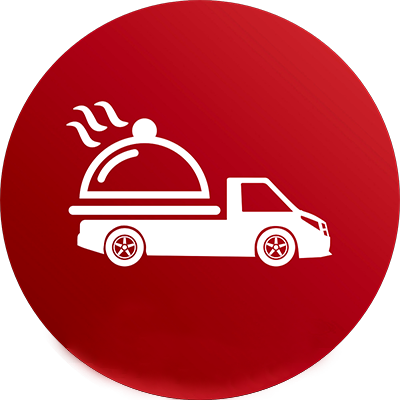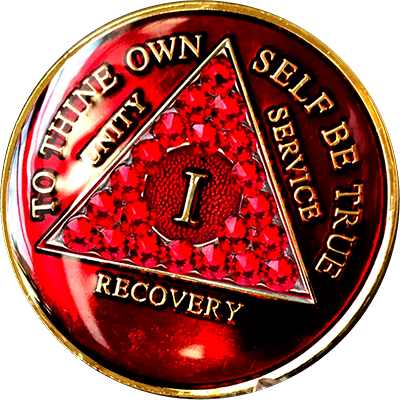A Service BDC (Business Development Center for service) is a part of a dealership focused exclusively on maximizing the service department’s performance — by capturing service demand, managing customer outreach, scheduling, follow‑ups, and retaining customer loyalty through excellent post‑sale support. It bridges the gap between customer interest or need (for maintenance, repair, recall, warranty, etc.) and the actual service delivery. The Service BDC ensures that incoming service requests are handled quickly, that no opportunity is wasted, that follow‑ups are consistent, and that the customer experience around service is smooth, reliable, and professional.
For many dealerships, service is a large portion of long‑term, stable revenue. It’s not only about fixing broken parts; it includes routine maintenance, preventive work, parts sales, customer retention, and leveraging service visits into further customer engagement. The Service BDC becomes the engine that keeps customers coming back, keeps the service bays full, and helps build trust and loyalty.
Why a Strong Service BDC Matters
Having a well‑functioning Service BDC (especially when enhanced with AI) delivers many strategic advantages:
Customer Retention and Loyalty: Regular service builds continued relationships. When customers are treated well—appointments scheduled easily, reminders sent, work completed on time—they are more likely to return for future work and even future vehicle purchases.
Smoother Service Operation: Well‑coordinated scheduling reduces idle technician time, improves parts planning, and lowers wait times for customers. That efficiency improves both satisfaction and profit margins.
Higher Revenue Potential: Service work often has better margins (parts, labor, accessories). Also, ancillary sales like upsells, recall or warranty work, or promotional offers help.
Reduced Lead Loss: Every missed call, delayed response, forgotten follow up is a lost opportunity. The Service BDC helps capture all incoming service inquiries, even outside regular hours, reducing leakage.
Competitive Differentiator: With many dealerships offering similar vehicles, excellent service is one way to stand out. Customers remember timely service, communication, and honesty.
Predictability and Planning: Having regular service demand build predictability allows better resource allocation—staff scheduling, parts inventory, facility readiness.
Better Reputation & Customer Satisfaction: Service experiences drive reviews. A smooth service process builds trust and leads to positive word‑of‑mouth or repeat business.
What BDC.AI Offers in Its Service BDC Tools
From what BDC.AI provides, these are features and capabilities designed to bolster Service BDC performance:
Lightning‑Fast Response Times: The platform promises average response times of about two seconds for incoming inquiries or requests. That means service requests are acknowledged almost immediately.
24/7 / Always Available Operation: AI agents are “always on,” meaning service leads or customer queries can be captured even when human staff are off‑hours or offline.
Omnichannel & Multilingual Communication: Messages via email, SMS, chat, perhaps voice; supports more than ten languages. This helps serve diverse customers in their preferred language and method.
Self‑Service Tools: Customers can use intuitive tools for scheduling, submitting service requests, perhaps canceling or adjusting appointments without always requiring live human support.
Custom Branding & Personalized Follow‑Ups: AI messages are tailored to match dealership’s tone and style, and follow‑ups remember what the customer asked, what vehicle they drove, preferences, etc.
CRM / DMS Integration: The system integrates with many dealership CRMs and DMS platforms so that data about vehicle history, appointments, parts inventory, pricing, etc., is accurate and available.
Appointment Confirmation & Show Tracking: The system emphasizes setting verified appointments with intent, sending appointment reminders, confirming appointments, tracking “show vs no‑show” rates.
Reporting & Analytics: Granular reporting down to salesperson or service advisor levels: how many service requests were handled, how many appointments set, how many were confirmed and kept, show rates, follow‑ups, etc.
Scalability with Cost Efficiency: Because AI handles much of the upfront responses, scheduling, follow‑ups, dealerships can manage many more service leads without growing staff proportionally.
Security and Compliance: Data is protected, implying enterprise‑grade security standards; helps in handling customer data responsibly.
Human Escalation: When the issue is complex, or if someone requests a human, or emotional or detail‑rich conversation is needed, the system is designed to hand off to a human agent with full context.
Key Functions of a Service BDC
To understand what a strong Service BDC does, here are the main responsibilities it should handle:
Inbound Service Request Handling: All customer‑initiated requests—online forms, calls, chat, texts—are received, acknowledged, qualified (what service is needed, vehicle, urgency, parts needed, etc.).
Appointment Scheduling and Management: Coordinating available service bays and advisors, scheduling appointments, sending reminders, confirming, rescheduling or canceling as needed.
Follow‑Up & Recall/Maintenance Programs: Outreach to remind customers of scheduled maintenance, warranty or recall work, oil changes, tire rotations, etc.
Customer Communication: Clear, consistent, timely communication about appointment time, cost estimates, parts availability, delays, expectations, and post‑service feedback.
No‑Show Recovery & Rescheduling: Active management of missed appointments—follow up, reschedule, fill gaps, optimize service bay usage.
Retention Activities: Loyalty programs, retention incentives, trade‑in offers, cross promotion between service parts or accessories.
Data Capture & Analytics: Logging every interaction, tracking KPIs, analyzing which types of outreach produce shows, what leads perform best, what messages/responses customers prefer.
Escalation & Quality Control: Ensuring that complex cases (insurance work, major repairs, customer disputes) are handled by experienced human agents, retaining good customer experience and trust.
Key Performance Indicators (KPIs) & Benchmarks in Service BDC
BDC.AI outlines several metrics and targets that a dealership should monitor to measure service‑BDC effectiveness. These serve both as goals and diagnostic tools. Some benchmarks are:
| Metric | Typical Target Range |
|---|---|
| Response Time to Service Request | Ideally within less than a minute; much better if near‑instant |
| Contact Rate (Service Inquiries) | 50‑70% — percentage of service leads actually engaged |
| Appointment Set Rate | Roughly 25‑35% of contacted requests set appointments |
| Show Rate for Service Appointments | Around 65‑80% of appointments held |
| Number of Engagements per Lead | Approximately 6‑10 touches or follow‑ups in nurturing period |
| Follow‑Up Duration | Over 14‑30 days for unconverted leads before classifying as cold |
| Customer Retention / Repeat Service Rate | Year‑on‑year increase shows strength of retention programs |
| Parts & Upsell Revenue per Visit | Additional revenue from parts/accessories associated with service visits |
| Customer Satisfaction Scores & Feedback | High rates of satisfaction post‑service, few complaints or escalations |
How Service BDC Drives Revenue & Value
Service BDC is not just cost center; it can be a strong profit driver and competitive differentiator. Here are how value is realized:
Capturing After‑Hours Demand: Many service needs arise outside conventional work hours. Having an always‑on response mechanism ensures those are not lost.
Reducing Idle Service Capacity: Service bays, technicians, parts supply are costly if under‐utilized. With good scheduling and follow‑up, you maximize usage.
Upsells & Add‑Ons: Because the service BDC communicates with clients, it’s well positioned to suggest additional needed maintenance, accessories, or repairs that may have been delayed.
Preventive Maintenance and Recall Work: Structured reminders and outreach on recall, warranty expiry, or maintenance schedules lead to more consistent service revenue, safer vehicles, and satisfied customers.
Reducing No‑Shows: Appointment confirmations, reminders, maybe even day‑of reminders or check‑in, reduce no‑shows and thus improve efficiency and revenue.
Customer Lifetime Value (CLV): Satisfied service customers are more likely to return for future work, recommend dealership to others, and eventually become buyers again.
Lower Staff Costs Through Automation: Many routine tasks (booking, confirmations, reminders, basic inquiries) don’t need human intervention every time; AI handles much and reduces staffing pressure.
Better Marketing & Lead Source ROI: When you track what kinds of service outreach work best (reminder mail, recall‑driven calls, email campaigns, etc.), you invest more in what yields results.
Best Practices & Strategies for a Highly Effective Service BDC
To build and maintain a strong Service BDC, dealerships should adopt some of these best practices:
Fast Acknowledgement of Inquiries: As soon as a service request arrives, send an acknowledgment, even if more detail or human follow‑up is needed. Speed builds confidence.
Define Clear Qualification Variables: Not all service requests are equal. Classify urgency, vehicle condition, parts needed, etc., so scheduling and staffing can be optimized.
Use Multichannel Communications: Use text, email, voice, chat as appropriate. Reminders work better if they come via the channel customer prefers.
Automated Reminders & Confirmations: Set up systems to send appointment reminders (e.g. day before, morning of) and confirmation requests to reduce no‑shows.
Post‑Service Follow‑Up: Reach out after service to check satisfaction, encourage reviews, make notes of any issues, and schedule next maintenance.
Personalization of Messages: Use vehicle history, customer preferences, prior interactions to personalize messaging. For example “Your last oil change was 6 months ago; your tire tread is below threshold, etc.”
Seamless Handoff to Human Agents When Needed: When issues are complex or customer wants a human, ensure transitions happen smoothly, with shared context.
Track & Analyze Performance Metrics Regularly: Use dashboards, daily or weekly reports to monitor booking rates, show‑rates, parts upsell, retention. Identify where process leaks are.
Continuous Script / Workflow Optimization: Review what messages or reminders get best responses. Test different timing, wording, or channels to see what yields best show rate and customer satisfaction.
Train Staff on Customer Experience & Communication: Even in automated workflows, human behavior and tone matter. Staff should be aligned with the dealership’s voice, ready to step in when necessary, and able to handle escalated issues smoothly.
Challenges & How to Overcome Them in Service BDC
A few obstacles commonly arise; anticipating them helps smooth implementation.
Data Accuracy: If your service schedules, parts inventory, or service advisor availability are not updated or synced, automated scheduling or messaging may promise things that aren’t available. Solution: strong integration and frequent updating.
Customer Communication Fatigue: Too many messages or reminders, especially across multiple channels, can irritate customers. Balance is important: useful reminders, minimal noise.
Complex or Sensitive Repair Work: Some repair work is emotional or complicated. Customers may want detailed explanations, sometimes negotiation. Automating everything may risk miscommunication. Having escalation paths is critical.
No‑Shows & Last‑Minute Cancellations: Even with reminders, this happens. Having policies or backup systems helps (e.g. filling slots, flexible rescheduling, deposit where appropriate).
Staff Adoption: Technology (AI, scheduling tools, etc.) requires that staff accept, trust, and know how to use these tools. Training, feedback, and aligning incentives help.
Maintaining Brand Voice: Templates and AI messages need oversight to ensure tone, wording, and brand consistency, especially as customers talk about service as part of brand reputation.
Privacy, Security & Compliance: Handling customer data requires adhering to privacy regulations, secure storage, control over how communication preferences are respected.
A robust Service BDC is vital for any dealership that wants to maximize customer satisfaction, efficiency, and long‑term profitability. With the right tools—especially AI‑powered platforms—dealerships can respond faster to service requests, maintain higher appointment show rates, reduce overhead, improve customer retention, and differentiate themselves in a competitive automotive market.
BDC.AI’s service BDC offering shows many paths for doing this well: ultra‑fast response, always‑on coverage, brand‑aligned communication, smart follow‑up, deep system integration, and detailed analytics. But success depends not just on technology—it requires setting crisp processes, tracking performance, keeping human agents involved for complexity, honoring the customer experience, and constantly refining scripts and workflows.
As vehicle sales cycles and customer expectations become more digital, more immediate, and more demanding, dealerships that invest in a high‑performance Service BDC will be those that retain customers, improve margins, and build reputations for reliability and excellence.
































